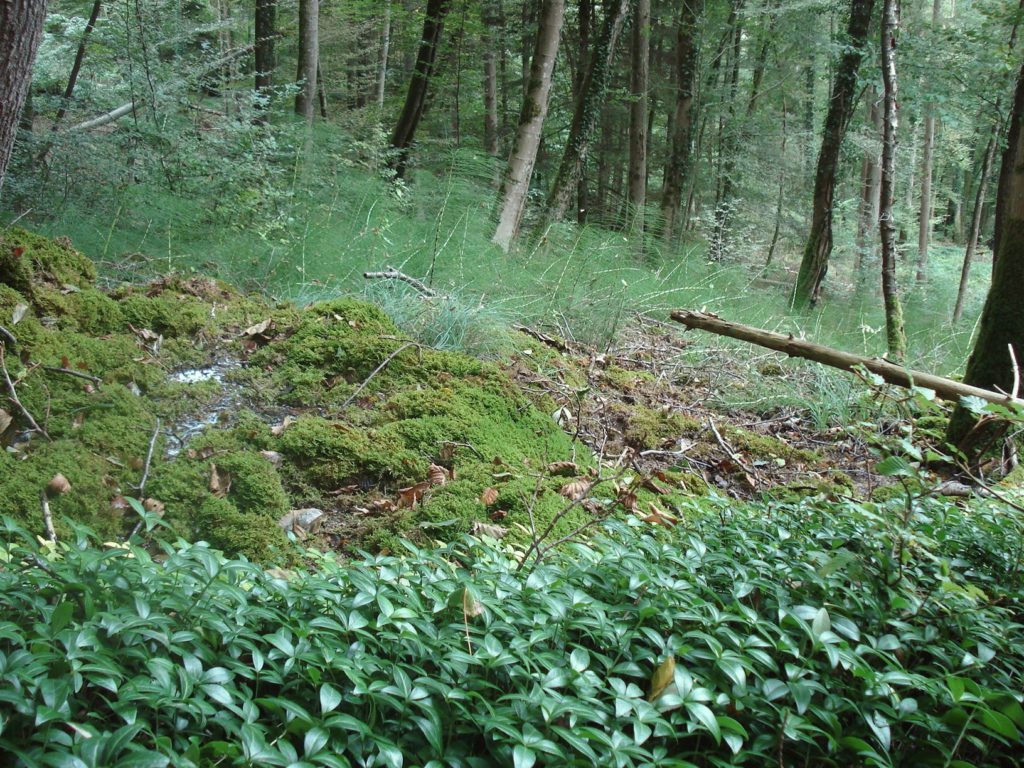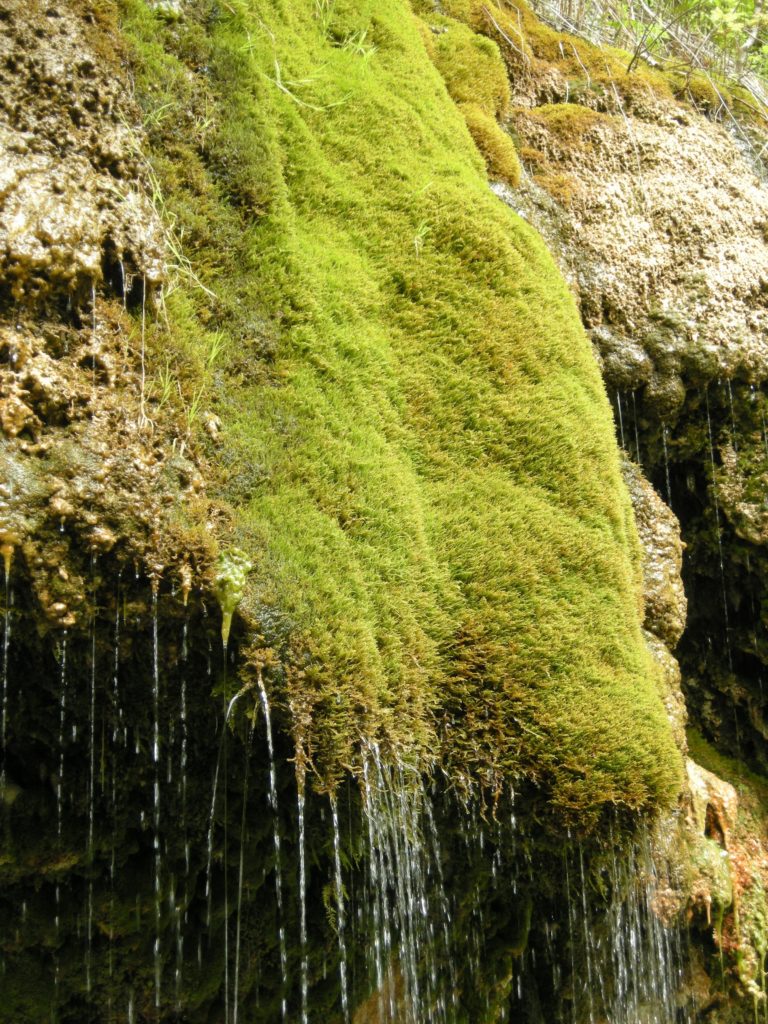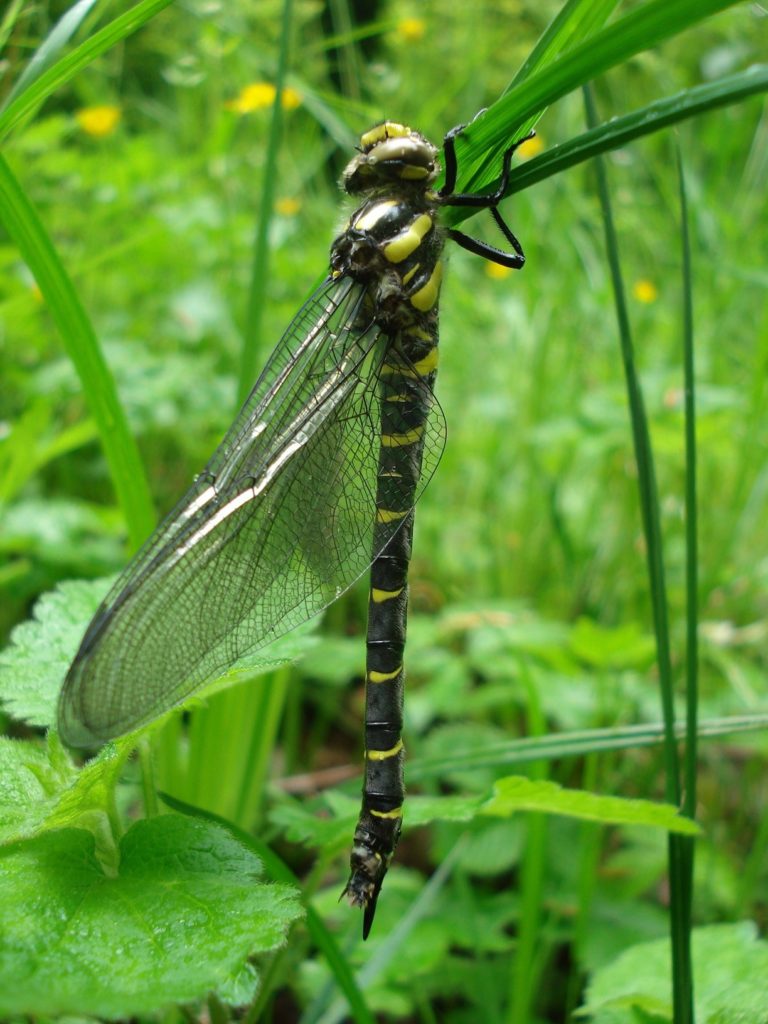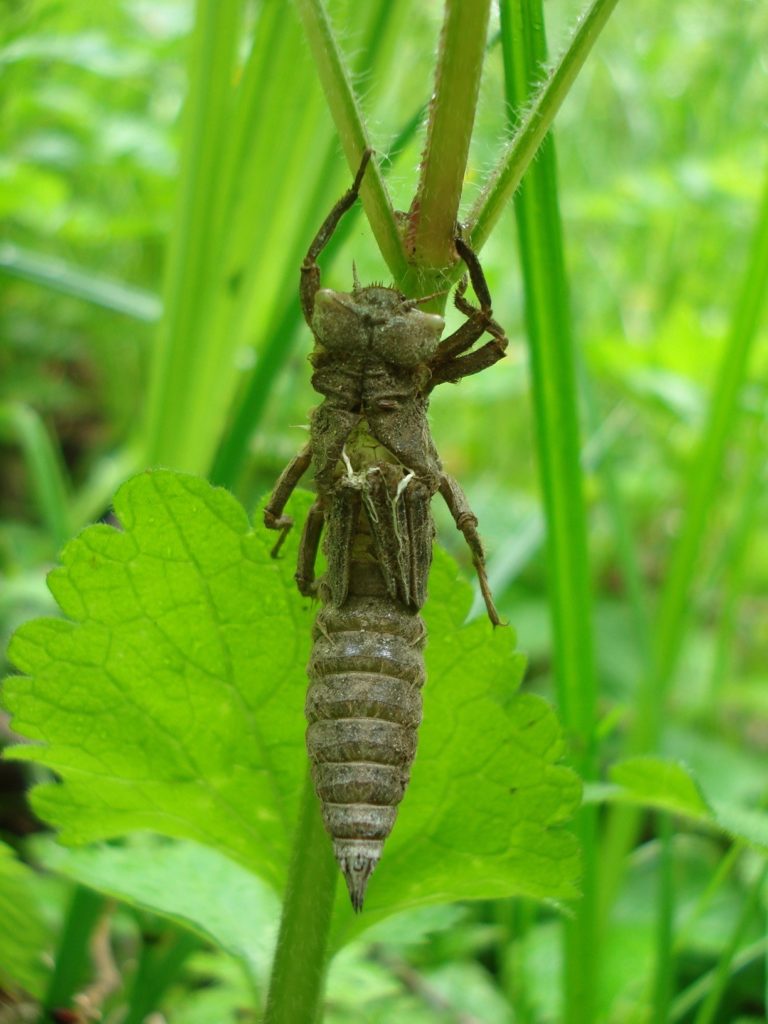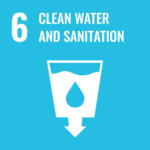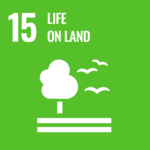Luxembourg sandstone is known for its numerous springs, and that’s also true of the Mëllerdall. Calcareous tufa springs are also found here. They are classified by the European Fauna and Flora Habitats directive as a priority habitat, although they generally require no special care except for ensuring a constant water balance, good water quality and a favourable microclimate thanks to a tree population suited to the site. What is typical of this habitat is the precipitation of calcium bicarbonates in the water, which form limestone deposits in the form of small crusts or thick sinter steps. Only a few highly-specialized animals and plants – which react sensitively to change – are suited to these relatively hostile conditions.
This special biological community – about which so little is known in Luxembourg – was the reason why the Nature and Forestry Administration and the Mëllerdall syndicate commissioned a comprehensive mapping of the springs in the municipalities of Aerenzdallgemeng, Bech, Beaufort, Berdorf, Consdorf, Echternach, Fischbach, Heffingen, Larochette, Mompach, Nommern, Rosport and Waldbillig for the first time in 2013. 348 springs were listed, 159 of which were located in open countryside and 189 in forests. An assessment of the springs revealed that about half of them are in a medium-to-poor state, those being invariably springs in open countryside.
This finding prompted the Nature and Forestry Administration, together with the Natur- & Geopark Mëllerdall and the organizations Natur&Mënsch sàrl and natur&ëmwelt Fondation Hëllef fir d’Natur, to devise the action programme for springs conservation in the Natur- & Geopark Mëllerdall. The aim of this project is to restore 40 springs so as to contribute to the conservation of this unique natural resource. In pastures, for example, springs can be protected with a fence, or small areas of conifers can be removed and replaced with deciduous trees at the points where springs emerge from the ground. When implementing the measures, it is of course also important to document changes so that all renaturation actions are accompanied by monitoring.
The project is financed by the Ministry of the Environment, Climate and Sustainable Development. All expenses involved in renaturing the springs are thus borne by the Ministry.
